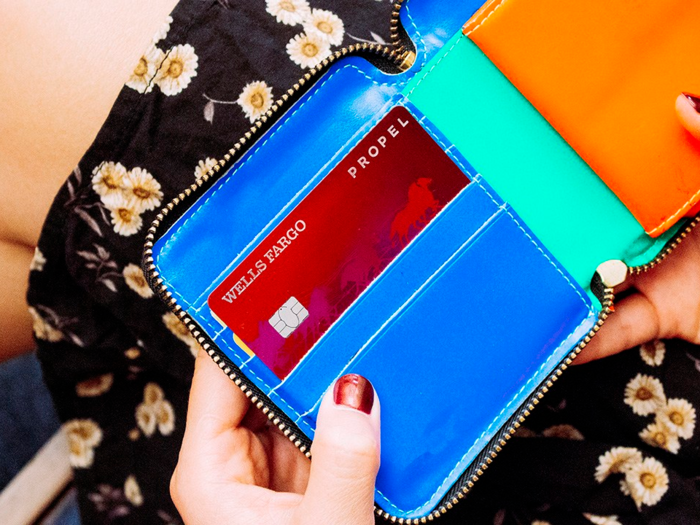- Home
- slideshows
- miscellaneous
- We compared the Chase Sapphire Reserve and AmEx Gold to determine the ultimate dining rewards card
We compared the Chase Sapphire Reserve and AmEx Gold to determine the ultimate dining rewards card
The annual fees — and the credits that offset them

Rewards: The earning on both cards is substantial

The Chase Sapphire Reserve earns 3x points per dollar spent on every dining or travel purchase (except for the first $300 of travel each year that is covered by the travel credit).
Both categories are broadly defined: Dining includes things like bars, cafes, restaurants, food trucks and booths, pubs, and in many cases, bakeries or ice cream shops. Travel, meanwhile includes everything from subways, taxis and Ubers, parking, and tolls, to flights, hotels, cruises, and more.
Travel website (and Business Insider e-commerce partner) The Points Guy subjectively values Chase Ultimate Rewards points at 2¢ each (more on that later), meaning you'd earn about 6% of value back on every dollar you spend.
The AmEx Gold Card offers a higher 4x points per dollar spent at US restaurants, as well as 4x points back at US supermarkets (on up to $25,000 per year — 1x point per dollar for anything beyond that) and 3x points per dollar on flights booked directly with the airline or with AmEx travel.
The AmEx card's restaurant category is similarly broad as the Sapphire Reserve's — I've gotten the category bonus at restaurants, bars, pubs, and cafes. The supermarket category excludes big box stores where you might buy groceries, like Target or Walmart, but includes most dedicated US supermarkets.
The Points Guy also subjectively values AmEx Membership Rewards points at 2¢ each, so going by that metric, you get a huge 8% of value back from the Gold Card — beating the Sapphire Reserve.
The travel category is much more restrictive. If your spending is more split between travel and dining, you may be better off with the Reserve. There may also be room in your wallet for both, especially considering that the AmEx Gold's effective annual fee is so low.
There's one other important difference to note: Even though the AmEx Gold earns higher rewards on dining, that's only applicable in the US. At restaurants when you're abroad, you'll only get 1x point per dollar spent. The Sapphire Reserve still earns its category bonuses when you use your card overseas.
Welcome bonuses: Earn a lot of points right away.

When you sign up for the Chase Sapphire Reserve you can get 50,000 bonus points when you spend $4,000 in the first three months — assuming you haven't opened a Sapphire-branded card in the past four years.
That bonus is worth $500 as cash back, $750 when used to purchase travel through Chase's booking portal, or potentially more when you transfer it to airline partners to book flights — more on all of that in a moment. Using The Points Guy's general valuation, which is a subjective aggregate of the realistic potential values you can get from points, it would be worth about $1,000.
The AmEx Gold Card offers 35,000 points when you spend $2,000 in your first three months with your new card.
The Gold has a lower bonus, but also a lower spending requirement to earn it. The higher earning rates on US restaurants, plus the rates at supermarkets, might make up for that.
The value AmEx offers when you use points for cash back is poor, although you can get around $350 towards flights if you book through AmEx travel, but potentially more by transferring to airline partners. Based on The Points Guy's valuation, that's about $700 in value.
There are a ton of different ways to use your points

Chase offers a few different ways to use Ultimate Rewards points.
You can use them to make purchases at a handful of retailers like Amazon or Apple, or for gift cards, but since you usually get less than 1¢ per point of value, this isn't advisable.
If you're set on using them for purchases, a better option is to just redeem them for cash back. Each point is worth 1¢, so 1,000 points = $10.
A better option: Book travel through Chase using your points. Normally, each point is worth 1¢ towards travel booked through Chase, but Sapphire Reserve cardholders get a 50% bonus — that makes them worth 1.5¢ each. Redeeming them this way, the 50,000-point sign-up bonus is worth $750.
However, the best option — potentially — is to transfer them to airline frequent flyer partners and book flights that way. You might be able to get a dramatically higher value for points this way.
That's because booking frequent flyer "award tickets" is different than buying reservations outright — you can read more about how it works here. In most cases, the cash price and the miles price of a ticket aren't linked, so it's possible to get exponentially increased value from your points by transferring them and booking an award ticket instead.
That means potentially being able to fly long-haul in first or business class with points, among other things.
For example, my wife and I recently flew first class to Japan and back by transferring credit card points to Virgin Atlantic, then booking flights on Virgin's partner airline All Nippon Airways. You can read about exactly how we booked the flights here.
The only catch is that you may need to search for saver availability — which are lower-priced award tickets. This can be tricky, but there are a ton of helpful guides online. Once you have a flight in mind, if you're having trouble figuring out how best to use your points, just do a Google search for that specific trip.
Chase partners with a few airlines (and hotels), including: Aer Lingus, Air France/KLM, British Airways, Iberia, JetBlue, Singapore Airlines, Southwest Airlines, United Airlines, Virgin Atlantic, Hyatt, Marriott, and IHG. By taking advantage of airline partnerships, you can usually find a way to book any flight at the saver level, even if that airline isn't listed.
AmEx similarly offers a few ways to use Membership Rewards points.
Redeeming for anything aside from travel offers a poor value, usually 0.5–0.8¢ each, and is generally a poor use of points.
Like with Chase, you can get a better value by booking travel through AmEx Travel, either online or by phone. However, unlike with the Sapphire Reserve, there's no bonus. Points are only worth 1¢ each towards flights, or 0.7¢ each towards anything else.
Another option is to use points to bid for upgrades on a flight. You'll only get 1¢ per point, but it can be a decent redemption if you want to try for an upgrade but don't want to pay cash.
The best use — like with Chase, again — is to transfer them to frequent flyer partners. AmEx has a different list of partners, although thanks to some overlapping partners you can pool points from each issuer's cards into those airlines' accounts.
AmEx's partners include: Aer Lingus, AeroMexico, Air Canada, Air France/KLM, Alitalia, ANA, Cathay Pacific, Avianca, British Airways, Delta, El Al, Emirates, Etihad, Iberia, Hawaiian Airlines, JetBlue, Singapore Airlines, and Virgin Atlantic, as well as Choice Hotels, Hilton, and Marriott.
Click here to learn more about the Chase Sapphire Reserve from Business Insider's partner: The Points Guy. Click here to learn more about the American Express Gold Card from Business Insider's partner: The Points Guy.Other benefits and perks

Both cards come with a few other benefits, too.
The Sapphire Reserve comes with a complimentary Priority Pass Select membership, which gets you free access to more than 1,200 airport lounges around the world. While the Platinum Card® from American Express is the absolute best option for airport lounges within the US, the Sapphire Reserve is still incredibly useful.
It also offers a statement credit up to $100 every four years to cover your application fee for Global Entry or TSA PreCheck, primary rental car insurance, trip and baggage delay coverage, travel insurance, and more. You can learn more about the other benefits here.
The AmEx Gold Card features a few additional benefits as well, including baggage and travel insurance, secondary rental car insurance, roadside assistance, and shopping protections. You also get a complimentary membership with ShopRunner, a service that gives you free two-day shipping at a wide range of online retailers. It works like Amazon Prime in a lot of ways, but outside of Amazon. You can learn more about the card's other benefits here.
Other cards to consider

By redeeming strategically for flights — whether in economy and in first or business class — you can get much more value from a transferable points credit card than you could from a cash back card.
However, if you're not interested in points or travel and want to consider cash back instead, there are two stellar options for dining.
First is the Capital One Savor Cash Rewards Credit Card. The card offers unlimited 4% cash back on dining and entertainment, 2% at grocery stores, and 1% back on everything else. It also offers 8% back on tickets purchased at Vivid Seats through May 2020, and a monthly statement credit to cover a Postmates Unlimited membership through December of this year.
Plus, the card offers a massive $500 cash sign-up bonus when you spend $3,000 in the first three months. All of that is even more impressive considering that the card has an annual fee of just $95.
Next is the Wells Fargo Propel American Express® Card. The card earns 3x points — each worth 1¢, so effectively 3% cash back — on dining, most travel and transit, and 1x (or 1%) on everything else. It's a bit less on the dining category than the Savor card, but the Wells Fargo Propel has no annual fee.
Plus, the Propel offers a welcome bonus of 30,000 points — worth $300 as cash back — when you spend $3,000 in the first three months. This is one of the best-available bonuses for a no-annual-fee card, and led us to argue that the Wells Fargo Propel is one of the best credit cards of 2019.
Bottom line

No matter which card you choose, both the Chase Sapphire Reserve and the American Express Gold Card offer valuable rewards on dining and flights, and a ton of value in benefits.
Click here to learn more about the Chase Sapphire Reserve from Business Insider's partner: The Points Guy. Click here to learn more about the American Express Gold Card from Business Insider's partner: The Points Guy.Popular Right Now
Popular Keywords
Advertisement